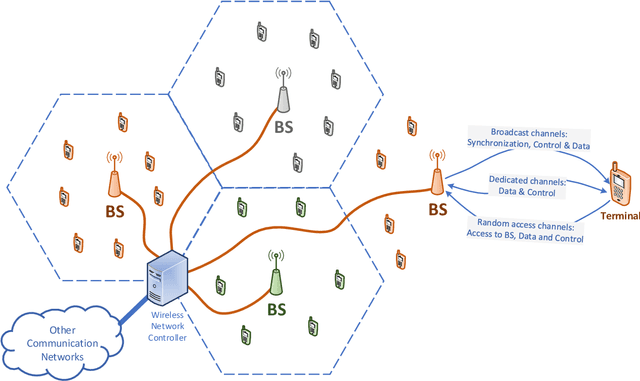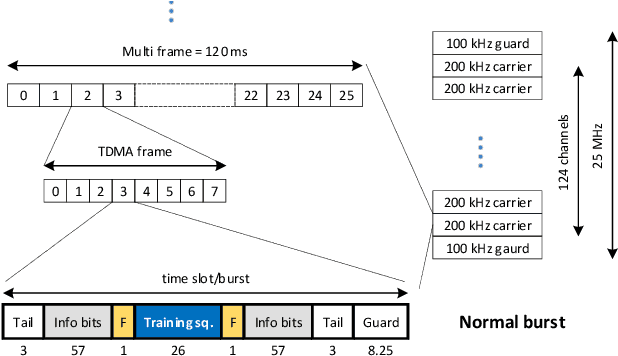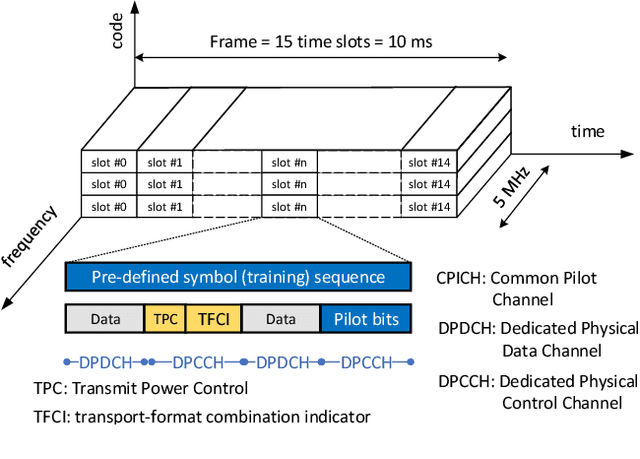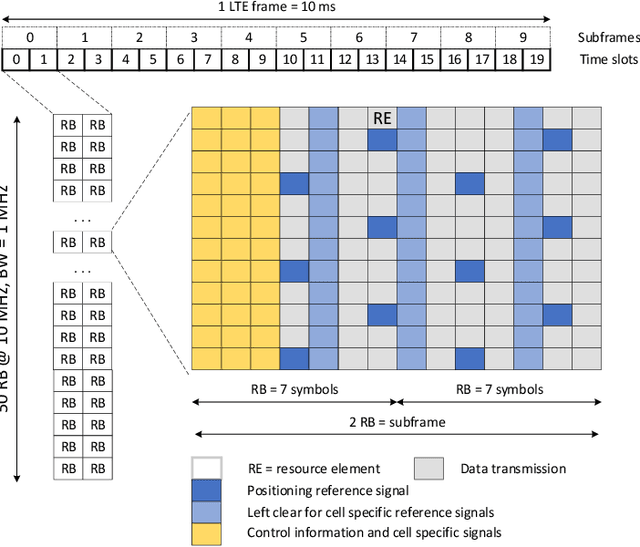Radio technologies for environment-aware wireless communications
Paper and Code
Nov 30, 2022



In this paper, we critically review the potential of today's terrestrial wireless communication systems including wireless cellular technologies (GSM, UMTS, LTE, NR), wireless local area networks (WLANs), and wireless sensor networks (WSNs), for estimating channel state information (CSI), the ratio between training and information symbols and the rate of channel variation, and the potential use of CSI in environment aware wireless communications. The research reveals, that early communication systems provide means for narrowband channel estimation and the CSI is only available as channel attenuation based on signal level measurements. By increasing the spectral bandwidth of communications, the CSI is estimated in some form of channel impulse response (CIR) in almost all currently used radio technologies, but this information is generally not available outside the communication systems. Also, the CSI is estimated only for the channel with active communications. The new radio technology (NR) offers the possibility of estimating the CIR for non-active channels as well, and thus the possibility of initiating environmentally aware wireless communications.
 Add to Chrome
Add to Chrome Add to Firefox
Add to Firefox Add to Edge
Add to Edge